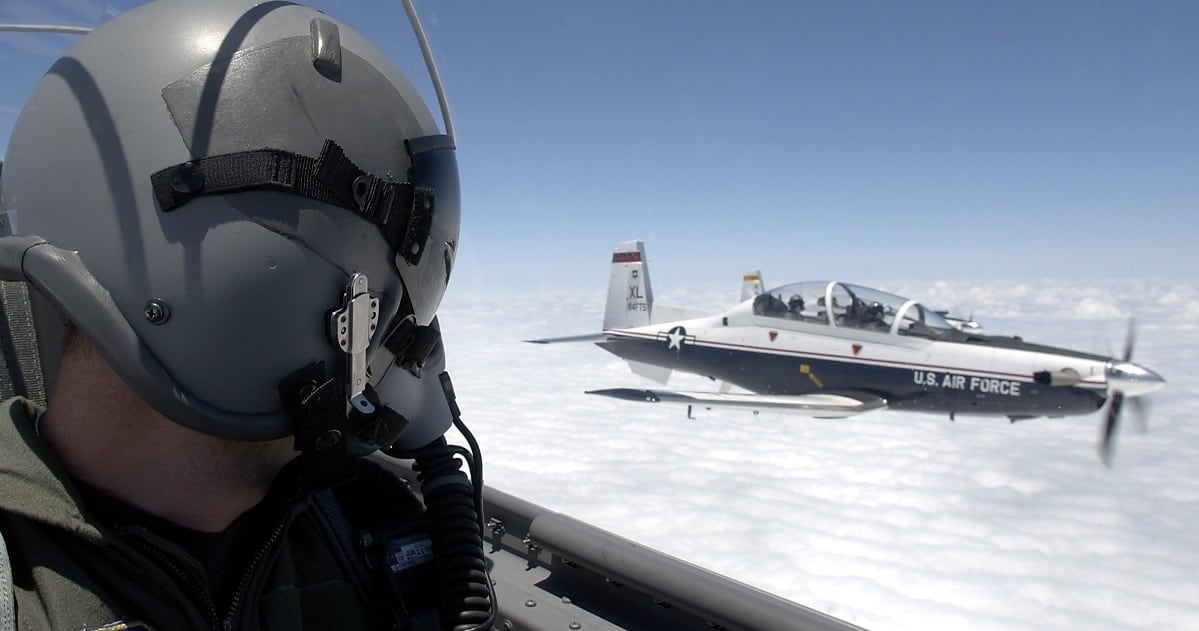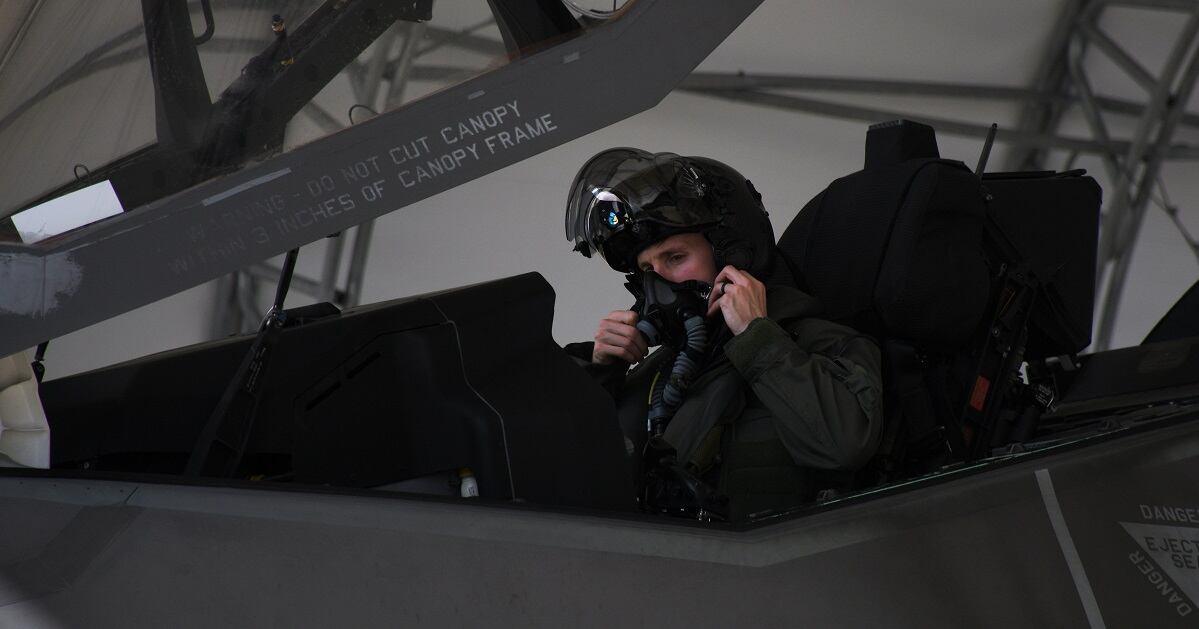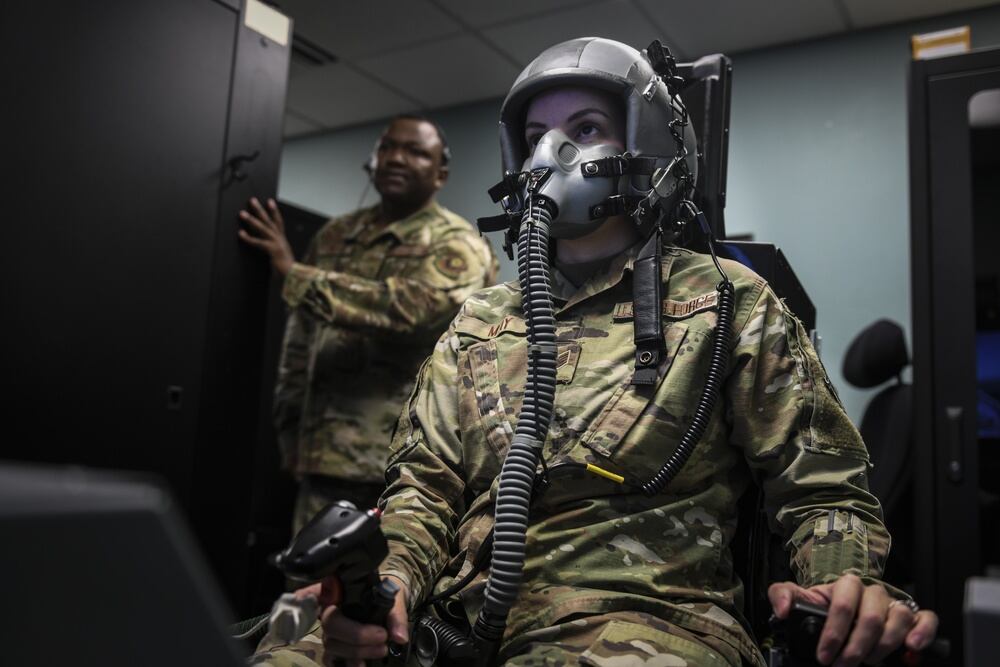The Air Force has made dozens of changes to reduce the risk of flight sickness among airmen who fly five types of military aircraft, but says it can’t erase the problem altogether after more than a decade of studies, according to a new report from the Pentagon Inspector General’s Office.
“It cannot completely eliminate [physiological events] caused by unanticipated aircraft malfunctions or human factors,” the Sept. 2 report said of the Air Force, later adding: “All occupations have some hazards that cannot be eliminated.”
Those incidents — such as hypoxia, hyper- and hypoventilation, decompression sickness, trapped gas disorders, gravity-induced loss of consciousness, spatial disorientation and visual issues, and toxic substance exposure — have rattled the aviation community and spurred nearly 70 research studies of aircraft and airmen’s breathing systems since October 2009.
Nearly 600 physiological events occurred across six kinds of Air Force planes between fiscal 2010 and 2020, including the F-15, F-22, F-35A and T-6A fleets, according to the Air Force Safety Center. The issues have led the service to temporarily ground the aircraft as it tried to figure out the problem.
RELATED

More than half of those, or 323 incidents, happened in the T-6A Texan II trainer aircraft, followed by the F-22 Raptor fighter at 92, F-15E Strike Eagle fighter at 70, F-15C and D Eagle fighters at 62, and F-35A Lightning II at 28. Incidents in the T-6A far outpace the others, logging more than seven times as many physiological episodes than the fighter jets in fiscal 2020.
The episodes can be disorienting to deadly, as in the deaths of four Navy F/A-18 Hornet pilots over 10 years that were linked to oxygen system failures.
To determine whether the Air Force has made progress in addressing the problem, the Defense Department watchdog looked into the propeller-driven T-6A, the first platform students fly in basic aircraft training, as well as the three F-15 variants.
The T-6A has the highest rate of pilot-reported physiological events among training aircraft, as does the F-15E among fighters, the IG said.
RELATED

The fixes fall into six categories: guidance, training, testing, maintenance, new designs and development, and research. Most of the completed changes were finished within two years, but a few took more than three years to close out.
As of March 22, the Air Force had implemented 47 of 79 safety recommendations that stemmed from service investigations into mishaps in those aircraft. It has also offered training to identify potential causes and symptoms of these health incidents and how to handle them if they happen.
It also changed aircraft maintenance procedures and modified the aircraft to bolster safety, and was updating the design criteria for future purchases of breathing systems. Still, the program office that manages each fleet must decide whether it wants to make upgrades to meet the new standard.
Other initiatives have included starting to install cockpit pressure warning systems and improving canopy maintenance to avoid depressurization in the F-15C, and creating an automatic backup oxygen system for the T-6A.
“Of the 32 open recommendations, 12 recommendations related to new design and development,” the IG report said. “According to [Air Force Safety Center] personnel, some recommendations require that an entire fleet of aircraft be upgraded or modified to close the recommendation. This process could take time and may require additional funding.”
The IG redacted information about the specific recommendations in its report, including the actions taken and when they were implemented. The Air Force has said it hopes to have all the changes in place by fiscal 2023.
The report argues that the Air Force’s interventions are working, though a sustained decline in the rate of incidents isn’t yet clear. The IG office found that the average rate of physiological incidents in the T-6A has dropped since fiscal 2018, but has fluctuated over the past few years across the F-15 fleet.
The Air Force has reasonable internal controls in place to ensure that it can effectively improve safety in the aircraft reviewed during the study, the IG said.
“The Air Force actions show that PEs are a serious issue and the Air Force functions as a team with collaborating partners to address a weakness in the fluctuations of oxygen levels in the cockpit to ensure aircrew safety across all aircraft platforms,” the report said. “Therefore, we are not making any recommendations.”
Rachel Cohen is the editor of Air Force Times. She joined the publication as its senior reporter in March 2021. Her work has appeared in the Washington Post, the Frederick News-Post (Md.), Air and Space Forces Magazine, Inside Defense, Inside Health Policy and elsewhere.




